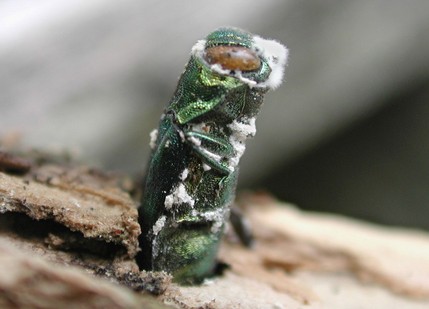
Tree diebacks, declines, and management prioritization
The highest priority for study at this time involves the impending introduction of the Emerald ash borer (Agrilus planipennis). Due to limited resources, management activities often need to be deployed differentially to reduce EAB-induced impacts in high-value areas and unique ecosystems. Basket-quality black ash stands are an example of an under-studied, unique ecosystem with high-value that is at risk from EAB in the North Central and Northeastern regions. When an EAB infestation is detected in the region, management will need to be prioritized to slow the progression of ash mortality towards areas likely to incur high economic costs (e.g., urban areas) and unique ecosystems (e.g., culturally significant, basket-quality black ash stands). The research will develop quantitative models and GIS maps relating site variables to the likelihood of finding basket-quality and ecologically important black ash sites. This will allow Native American tribes, other landowners, and state and federal officials to identify critical habitats that should receive high priority for protection. As a result, critical black ash habitats will be monitored and protected.
Investigators: Livingston, W. ; Daigle, J.; Lilieholm, R.; Ranco, D.; White, A.
Unit: School of Forest Resources
Termination Date: 30-Sep-16
